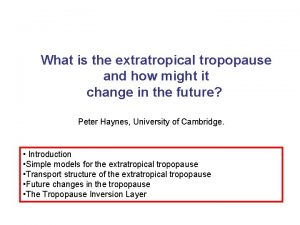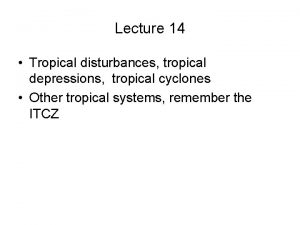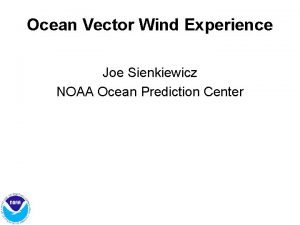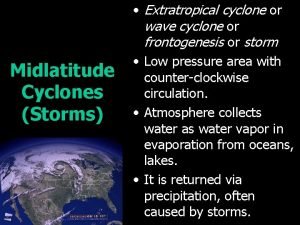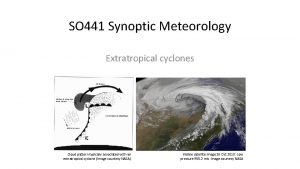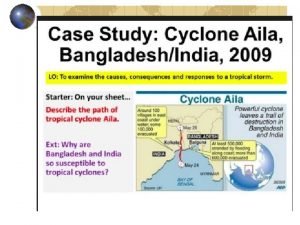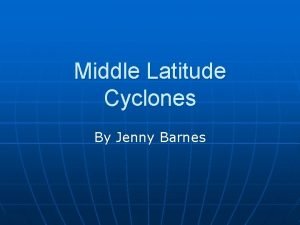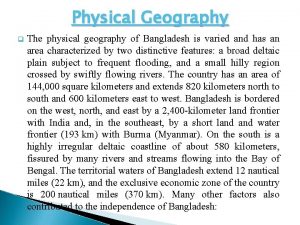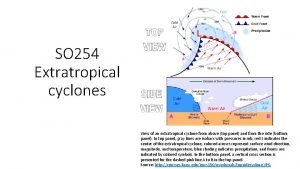Review Current Weather Extratropical Cyclones Review For Next










- Slides: 10

Review Current Weather Extratropical Cyclones Review For Next Class: Study!! Bring a #2 pencil.




Extratropical Cyclones • Where are favored locations for extratropical cyclone formation in the contiguous U. S. ?

Climatically Favored Regions of Cyclogenesis • Extratropical cyclones originate and require – Weak atmospheric stability, favoring ascending motion of air – A nearby source of warm, humid air, which favors condensation of water vapor at low levels that releases latent heat and increases buoyancy – Strong horizontal temperature gradients in the lower troposphere that give rise to fronts – The jet stream oriented above so diverging air aloft evacuates the rising air that has converged near the central low pressure

Climatology of Cyclone Paths • Alberta Clipper - the principal tracks of cyclones that develop to the lee of the Canadian Rockies in Alberta and travel rapidly east across southern Canada or the northern tier states • Nor’easter - the principal tracks of cyclones that track toward the northeast along the East Coast

Big Ideas • Pressure gradient force, Coriolis force, friction and gravity interact in initiating and affecting atmospheric circulation • Horizontal and vertical air motions in anticyclones and cyclones determine weather • The principal features of atmospheric circulation are the ITCZ, trade winds, subtropical highs, the westerlies, polar front, subpolar lows, polar easterlies and polar highs • Aloft, in the middle and upper troposphere, winds blow – Counter to the surface trade winds in tropical latitudes – In a west-to-east wave pattern at middle and high latitudes

Big Ideas • Through the course of a year, components of the planetary-scale circulation shift north and south with the Sun, influencing regional climates • Synoptic scale wind and cyclone climatology emphasizes the link between the westerly winds aloft and the weather and climate of middle latitudes – Westerlies produce horizontal divergence aloft for the development of cyclones, steer storms and influence air mass trajectories

Key Terms • • • • • • Force Pressure gradient force Coriolis Effect Coriolis force Geostrophic wind Gradient wind Wind vane Cup anemometer Scatterometer Synoptic scale Mesoscale Microscale Subtropical high Horse latitudes Westerlies Trade winds Intertropical convergence zone (ITCZ) Circumpoler vortex Front • • • • • Friction Molecular viscosity Eddy viscosity Eddies Boundary layer Gravity Polar front Hadley cell Trade wind inversion Rossby waves Meridional flow Zonal flow Blocking pattern Arctic Amplification Norwegian Cyclone Model Cyclogenesis Jet stream Polar front jet stream Alberta Clipper Nor’easter

